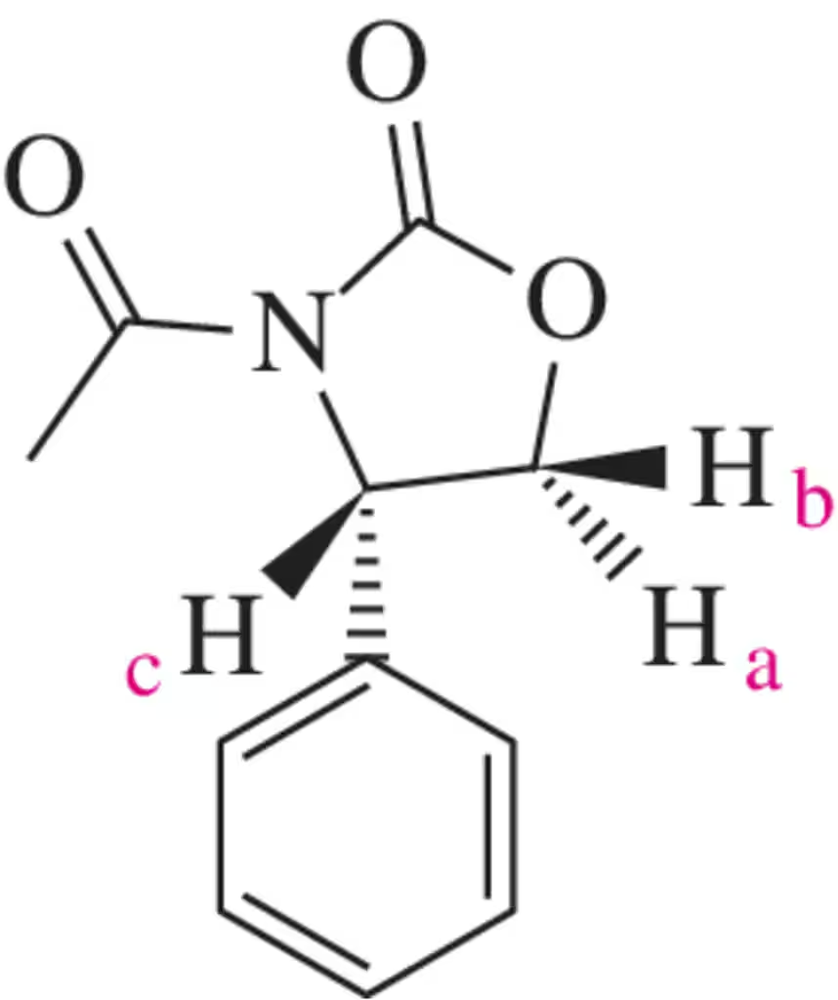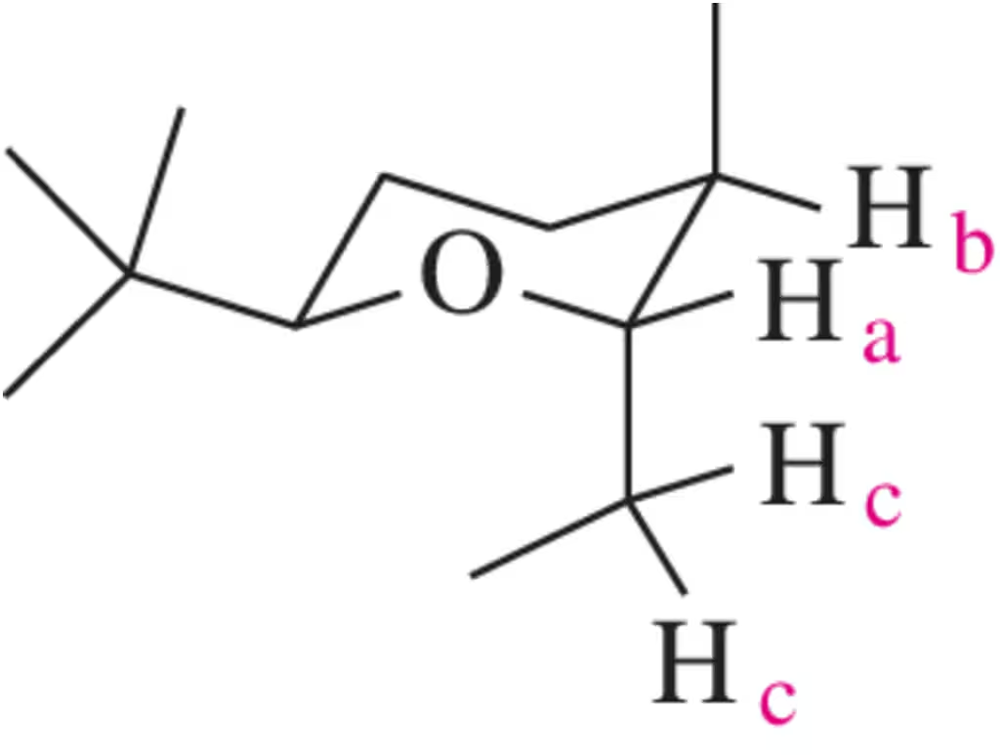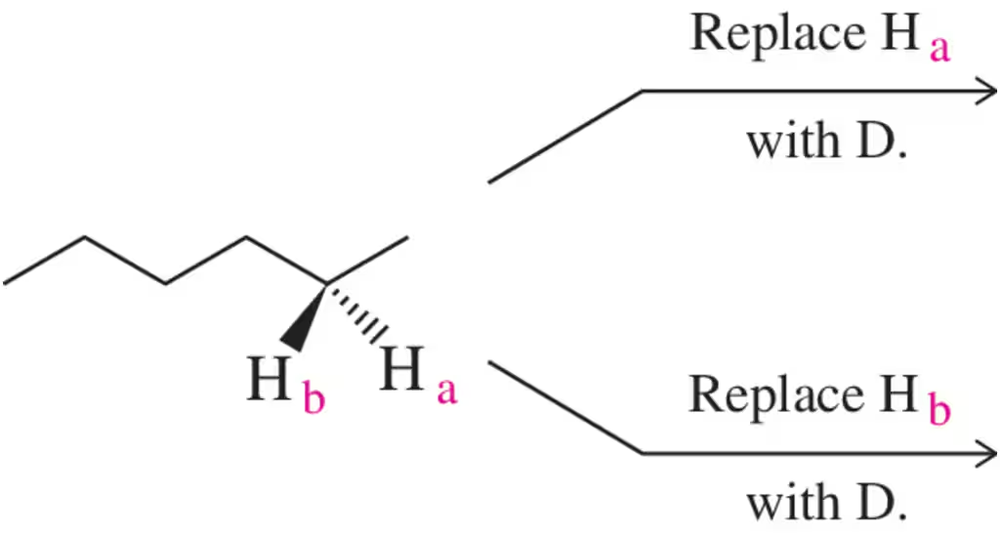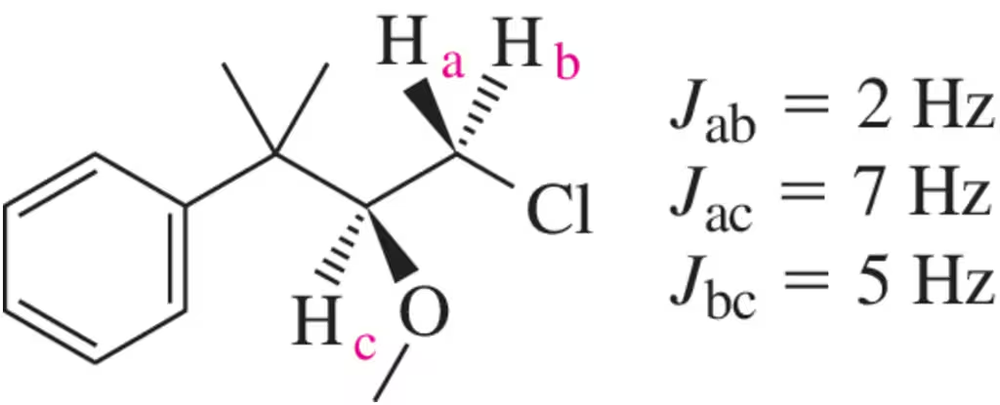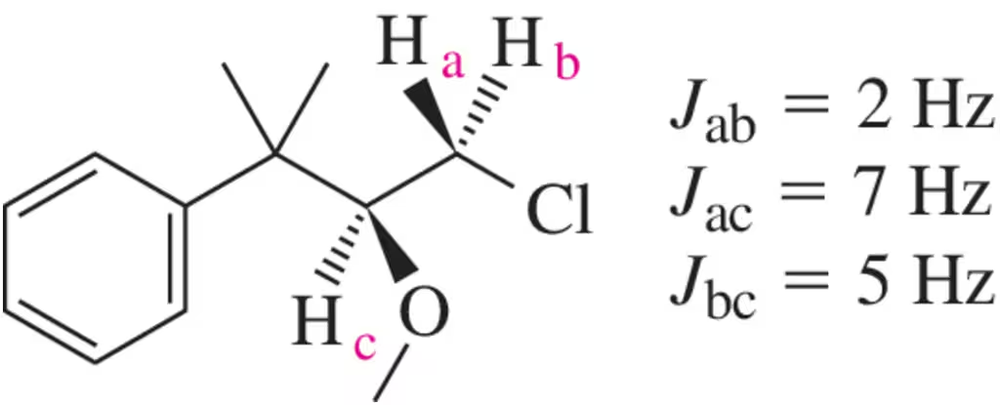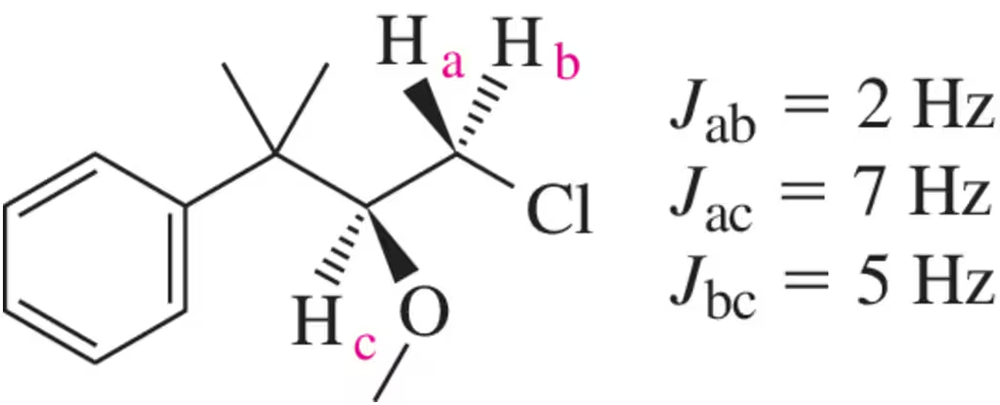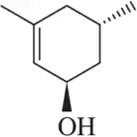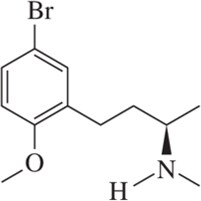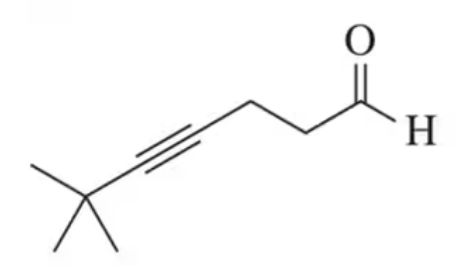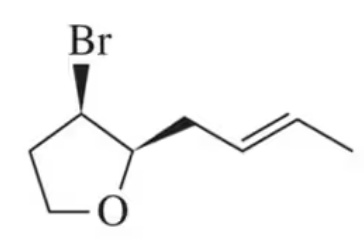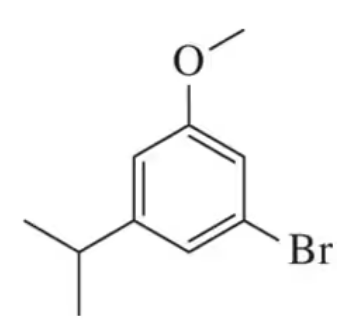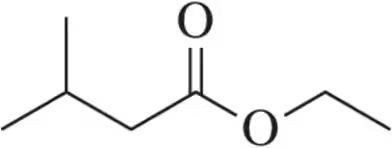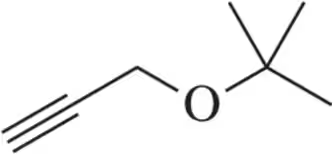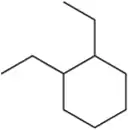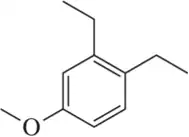 Back
Back Mullins 1st Edition
Mullins 1st Edition Ch. 15 - Structural Identification II: Nuclear Magnetic Resonance Spectroscopy
Ch. 15 - Structural Identification II: Nuclear Magnetic Resonance SpectroscopyProblem 40a
Draw the expected signal for a hydrogen with the following coupling constants.
(a) Hₐ : δ 5.34 (Jₐ꜀ = 12 , Jₐ₆ = 2)
Problem 40b
Draw the expected signal for a hydrogen with the following coupling constants.
(b) Hₐ : δ 3.34 (Jₐ꜀ = 9 , Jₐ₆ = 4 )
Problem 41
Though it wasn't discussed, what coupling constant would you expect for Hₐ and H꜀ in the spectrum of trans-but-2-enoic acid in Figure 15.50? Justify your answer.
<IMAGE>
Problem 42
Replace Hₐ and H₆ in hexane with a deuterium. What is the relationship between the two products you obtain? Based on this, would you expect the two hydrogens to give one or two signals in the ¹H NMR spectrum?
Problem 43
Replace Hₐ, H₆, and H꜀ in methyl benzene with a deuterium. What is the relationship between the three products you obtain? Based on this, how many signals would you expect for these hydrogens in the ¹H NMR spectrum?
Problem 44
Replace Hₐ and H₆ in acetone with a deuterium. What is the relationship between the two products you obtain? Based on this, would you expect the two hydrogens to give one or two signals in the ¹H NMR spectrum?
Problem 45a
Sketch the signals you would expect to see for Hₐ in the molecule shown. The important coupling constants are given.
Problem 45b
Sketch the signals you would expect to see for Hb in the molecule shown. The important coupling constants are given.
Problem 45c
Sketch the signals you would expect to see for H꜀ in the molecule shown. The important coupling constants are given.
Problem 46b
How many signals would you expect in the ¹³C NMR spectrum of each molecule shown?
(b)
Problem 46c
How many signals would you expect in the ¹³C NMR spectrum of each molecule shown?
(c)
Problem 49a
Draw the 13C NMR spectrum of each molecule in Assessment 15.48.
(a)
Problem 49b
Draw the 13C NMR spectrum of each molecule in Assessment 15.48.
(b)
Problem 49c
Draw the 13C NMR spectrum of each molecule in Assessment 15.48.
(c)
Problem 50a
Assign each signal in the ¹³C NMR spectra to the molecule shown.
(a) <IMAGE>
Problem 50b
Assign each signal in the ¹³C NMR spectra to the molecule shown.
(b) <IMAGE>
Problem 54a
Draw the expected results of a DEPT sequence for the molecules shown.
(a)
Problem 54b
Draw the expected results of a DEPT sequence for the molecules shown.
(b)
Problem 56
With information from the ¹H NMR and the ¹³C DEPT spectra, structure elucidation becomes even easier. Provide the structure that corresponds to the following data. [The identity of the carbons comes from the DEPT experiment.]
C₆H₁₁BrO₂
IR: 1745 cm ⁻¹
¹H NMR: δ 1.25 (t, 3H), 2.18 (quint, 2H), 2.58 (t, 2H), 3.46 (t, 2H), 4.15 (q, 2H)
¹³C NMR: δ 14.2 (CH₃) , 27.8 (CH₂) , 32.5 (CH₂) , 32.6 (CH₂) , 60.5 (CH₂) , 172.4 (C)
Problem 57a
How many distinct signals would you expect to see in the ¹H NMR spectrum of the following molecules? [Ignore diastereotopic hydrogens for the sake of this assessment.]
(a)
Problem 57b
How many distinct signals would you expect to see in the ¹H NMR spectrum of the following molecules? [Ignore diastereotopic hydrogens for the sake of this assessment.]
(b)
Problem 57c
How many distinct signals would you expect to see in the ¹H NMR spectrum of the following molecules? [Ignore diastereotopic hydrogens for the sake of this assessment.]
(c)
Problem 57f
How many distinct signals would you expect to see in the ¹H NMR spectrum of the following molecules? [Ignore diastereotopic hydrogens for the sake of this assessment.]
(f)
Problem 58c
For the following molecules, give the integration you would expect for the signal associated with the hydrogens at the labeled carbons. [Pay attention to the symmetry, or lack of symmetry, in the molecules.]
(c)
Problem 58e
For the following molecules, give the integration you would expect for the signal associated with the hydrogens at the labeled carbons. [Pay attention to the symmetry, or lack of symmetry, in the molecules.]
(e)
Problem 58f
For the following molecules, give the integration you would expect for the signal associated with the hydrogens at the labeled carbons. [Pay attention to the symmetry, or lack of symmetry, in the molecules.]
(f)
Problem 59b
For the following molecules, give the chemical shift for each indicated hydrogen.
(b)
Problem 59d
For the following molecules, give the chemical shift for each indicated hydrogen.
(d)
Problem 59e
For the following molecules, give the chemical shift for each indicated hydrogen.
(e)
Problem 60a
Predict the splitting pattern for each of the indicated hydrogens in Assessment 15.59.
(a)
